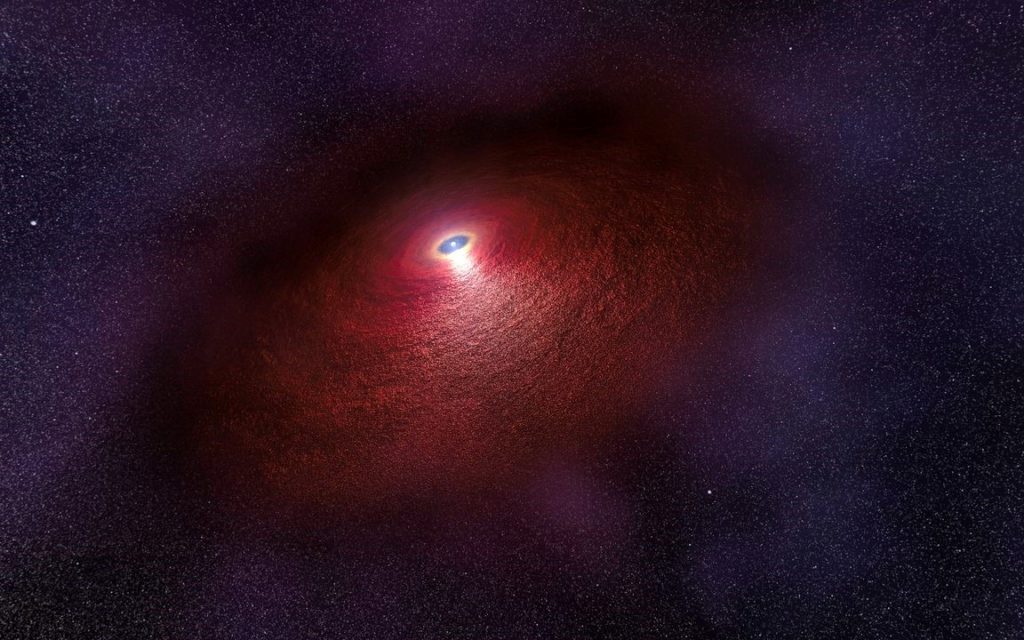
I learned this today. Nuclear pasta is a theoretical matter that might exist in the crust of a neutron star. It would be the strongest material in the universe and would be ten billion times stronger than steel.
A neutron star forms when a supergiant star collapses. Stars are made up of hydrogen and helium. Hydrogen is the simplest element in the universe and has one electron. The center of a star is under massive pressure which causes incredible heat. This heat is thermo energy and when hydrogen molecules have enough thermo energy they crash into each other and combine. When four hydrogen atoms combine, they make one helium atom and the left-over mass becomes energy. When there is no hydrogen left, stars start to convert helium into carbon.
When small stars have used all of their carbon, they stop burning, but if a star is heavy enough, it then starts to convert the carbon into heavier elements. They produce oxygen, then silicon, and finally iron. Iron is the last because fusing silicon into iron takes more energy than it gives off and this process uses up all of the star’s energy. It would take an incredible amount of energy to convert iron into a heavier metal.
When the star has an iron rich core, it cannot support itself against its own enormous gravity and it collapses. Its atmosphere explodes out in a giant supernova and its core collapses. The core of a neutron star could be about 15km across, while having the mass of a star 8 times bigger than our star. They are obviously incredibly dense.
When the star collapses, the immense density crushes the protons and electrons together until they form neutrons and neutrinos. The neutrinos fly out, but the neutrons are densely packed together. This is why it is called a neutron star.
A neutron star has different densities at different depths within itself and these different densities are responsible for the nuclear pasta.
In the crust of the star, neutrons combine into nuclei and form a solid crust. A little under the crust, the density increases and more neutrons are forced into the nuclei, which swell up. Once the nuclei reach their maximum size, they can no longer hold any more neutrons and these excess neutrons drip down to the lower edge of the crust.
Nuclear pasta forms in these layers between the top of the crust and the base. The neutrons are crushed by the enormous pressure and gravity of the neutron star while, at the same time, being repelled from each other by Coulomb repulsion. This is the repulsion force of positive by positive and negative by negative. The two opposing forces cause the neutrons to form different shapes.
The first nuclear pasta phase is the gnocchi phase. The neutrons are condensed into larger semispherical groups that look like gnocchi.
After that, the gnocchi go deeper, and the pressure increases. The gnocchi can’t support themselves and they are crushed into long rods that look like spaghetti. This is the spaghetti phase.
Deeper still, the pressure increases, and the spaghetti rods fuse together making large sheets. This is the lasagna phase.
Yet deeper, the pressure causes some of the neutrons to become a liquid. These holes get bigger, and we have the Swiss cheese phase. This is the last layer.
All of this nuclear pasta takes place in about 100m of the crust. That doesn’t sound like much but, because of its astronomical density, that 100m weighs the same as 3,000 Earths!
The nuclear pasta has a density of 1017 kg/m3. If you put a spoonful on Earth, nothing could ever pick it up. It would weigh about 10 million tons. And, because it is so dense, it would be ten billion times stronger than steel.
Once the neutrons move past the Swiss cheese phase and descend towards the core of the star, the pressure and the heat continue to increase. The neutrons become a superdense superfluid. A superfluid is one that has zero viscosity. The fluid moves without losing kinetic energy. Once stirred, it will move indefinitely. The core is also a superconductor, which means it conducts electricity without any resistance.
So, nuclear pasta is the layer in the crust of a neutron star where neutrons are forced together under extremely high pressure and look like various pasta shapes. However, all of this is theoretical. And this is what I learned today.
Image By ESA/Hubble, CC BY 4.0, https://commons.wikimedia.org/w/index.php?curid=72841821
Sources
https://www.skyatnightmagazine.com/space-science/nuclear-pasta/
https://en.wikipedia.org/wiki/Nuclear_pasta
https://en.wikipedia.org/wiki/Neutron_star
https://futurism.com/what-happens-when-stars-produce-iron

